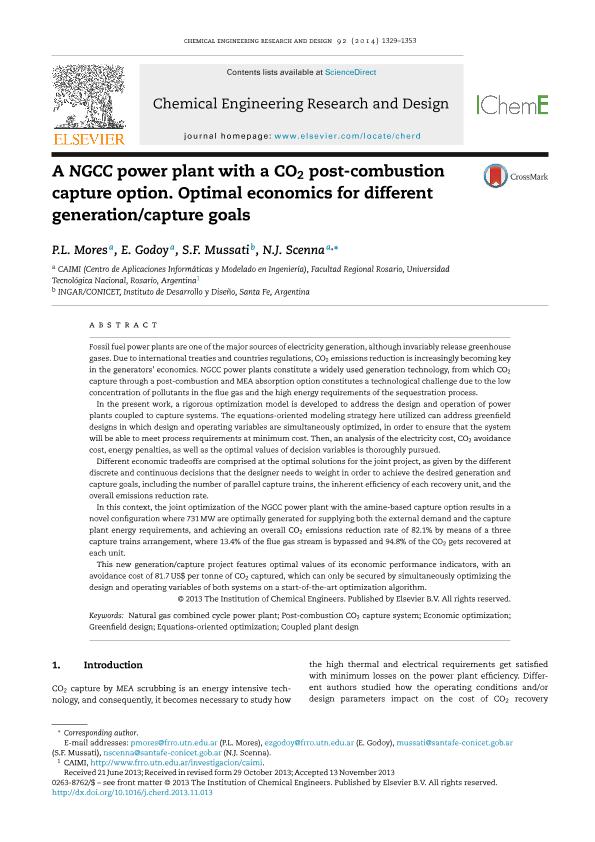Artículo
A NGCC power plant with a CO2 post-combustion capture option. Optimal economics for different generation capture goals
Fecha de publicación:
07/2014
Editorial:
Inst Chemical Engineers
Revista:
Chemical Engineering Research & Design
ISSN:
0263-8762
Idioma:
Inglés
Tipo de recurso:
Artículo publicado
Clasificación temática:
Resumen
Fossil fuel power plants are one of the major sources of electricity generation, although invariably release greenhouse gases. Due to international treaties and countries regulations, CO2emissions reduction is increasingly becoming key in the generators? economics. NGCC power plants constitute a widely used generation technology, from which CO2capture through a post-combustion and MEA absorption option constitutes a technological challenge due to the low concentration of pollutants in the flue gas and the high energy requirements of the sequestration process. In the present work, a rigorous optimization model is developed to address the design and operation of power plants coupled to capture systems. The equations-oriented modeling strategy here utilized can address greenfield designs in which design and operating variables are simultaneously optimized, in order to ensure that the system will be able to meet process requirements at minimum cost. Then, an analysis of the electricity cost, CO2avoidancecost, energy penalties, as well as the optimal values of decision variables is thoroughly pursued. Different economic tradeoffs are comprised at the optimal solutions for the joint project, as given by the different discrete and continuous decisions that the designer needs to weight in order to achieve the desired generation and capture goals, including the number of parallel capture trains, the inherent efficiency of each recovery unit, and the overall emissions reduction rate. In this context, the joint optimization of the NGCC power plant with the amine-based capture option results in a novel configuration where 731 MW are optimally generated for supplying both the external demand and the capture plant energy requirements, and achieving an overall CO2emissions reduction rate of 82.1% by means of a three capture trains arrangement, where 13.4% of the flue gas stream is bypassed and 94.8% of the CO2gets recovered at each unit. This new generation/capture project features optimal values of its economic performance indicators, with an avoidance cost of 81.7 US$ per tonne of CO2captured, which can only be secured by simultaneously optimizing the design and operating variables of both systems on a start-of-the-art optimization algorithm.
Archivos asociados
Licencia
Identificadores
Colecciones
Articulos(CCT - ROSARIO)
Articulos de CTRO.CIENTIFICO TECNOL.CONICET - ROSARIO
Articulos de CTRO.CIENTIFICO TECNOL.CONICET - ROSARIO
Articulos(INGAR)
Articulos de INST.DE DESARROLLO Y DISEÑO (I)
Articulos de INST.DE DESARROLLO Y DISEÑO (I)
Citación
Mores, Patricia Liliana; Godoy, E.; Mussati, Sergio Fabian; Scenna, Nicolas Jose; A NGCC power plant with a CO2 post-combustion capture option. Optimal economics for different generation capture goals; Inst Chemical Engineers; Chemical Engineering Research & Design; 92; 7; 7-2014; 1329-1353
Compartir
Altmétricas




